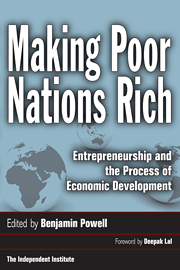Country after country has fallen under the spell of the far Left in Latin America. The result of Chile’s presidential election which has crowned Gabriel Boric, a 35-year-old firebrand with zero understanding of what brought success to the country in recent decades, confirms the trend that has placed much of the region under illiberal, anti-Western, and anti-capitalist governments. Boric might turn out to be a moderate, but his demonization of Chile’s successful socioeconomic model, his support of violent riots in the last couple of years, and his alliance with the Communist Party indicate that he will need to do a spectacular volte-face for this to happen.
Colombia, where Gustavo Petro is ahead in the polls, and mighty Brazil, where Lula da Silva is leading with 45 percent, could follow suit next year, as could Costa Rica, leaving a small number of countries—the Dominican Republic, Uruguay, Ecuador—on the other side. Of those leaders who stand in opposition to the hard Left, some, such as Ecuador’s Guillermo Lasso, are suffering the onslaught of well-organized efforts to destroy them.
Several factors explain this tide: The region’s political culture has not overcome its century-old populist tradition, and the pandemic has turned the clock back for millions who had joined the lower-middle class. According to the Economic Commission for Latin America and the Caribbean, in 2020, poverty and extreme poverty reached levels not seen in the last twelve and 20 years, respectively. Further, center-right governments have not engaged in meaningful free-market reform, often impeded by powerful left-wing populist movements, which, coupled with the failure of the left-wing governments, kept average GDP growth at 0.3 percent per year between 2014 and 2019. Finally, in the age of instant global communications, inequality has become a source of resentment and frustration: The Gini index, which measures income disparities, increased by almost 6 percent in 2020.
We are not talking about the pendulum going from center-right conservatism to European-style, center-left social democracy. We have seen various forms of assault on the constitutional order, from leaders keen to change the rules of the game (including their countries’ constitutions); subverting the rule of law and liberal democracy; and remaining in power through patronage, redistribution, violence, and propaganda aimed at branding opponents as “fascists.” Those leaders openly or hypocritically oppose Western influence and capital, stoke up social and racial resentment, and consider center-left governments that played a constructive role in the region since the 1990s traitors. In these past 30 years, the parties of the center-left, formerly known as the “Concertación,” have been in power much longer than center-right parties; they have been as defamed as, if not more than, the conservatives by hard leftists who vituperate the post-Pinochet era.
If Lula da Silva—the former Brazilian president who spent time in jail on corruption charges and, together with successor Dilma Rousseff, plunged the country into one of its worse political and economic crises—wins in 2022, the takeover of Latin America by the populist Left will be consummated. Lula supports every left-wing dictatorship and has justified gross human-rights violations in Cuba and Nicaragua. (He recently asked why the world questions the fact that Nicaragua’s Daniel Ortega has been in office almost 16 years while it did not object to Germany’s Angela Merkel ruling for an equivalent period!)
When Hugo Chávez assumed power in Venezuela in 1999, the price of a barrel of oil was $8; it eventually surpassed the $100 mark, fueling his populist regime and facilitating the destruction of the rule of law. We are now entering, by the looks of it, a new commodities boom that will benefit many countries that produce minerals, hydrocarbons, and agricultural goods. Except for Mexico, where industrial goods play a larger role in the economy, this will help the cause of the largest countries of Latin America, several of which are in the hands of demagogues and the rest of which could be in similar hands by the end of 2022 or the beginning of 2023. It is not a pretty picture.













